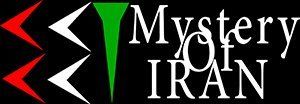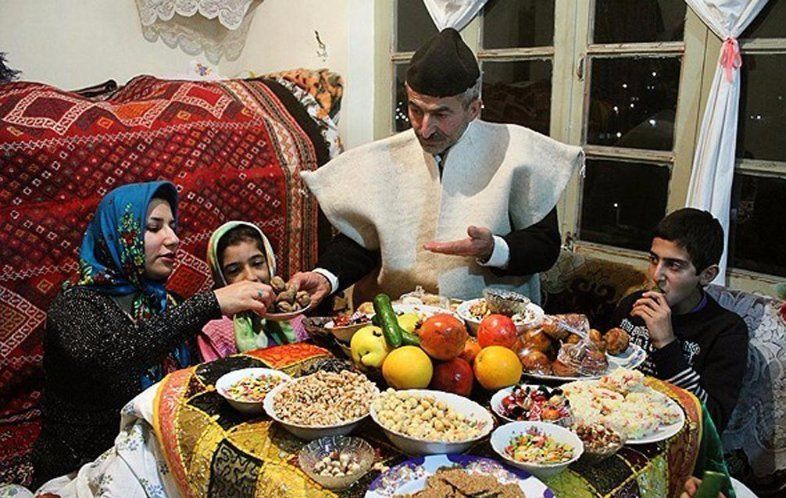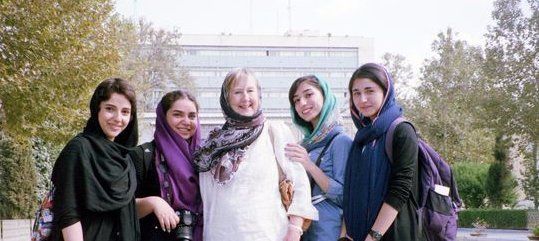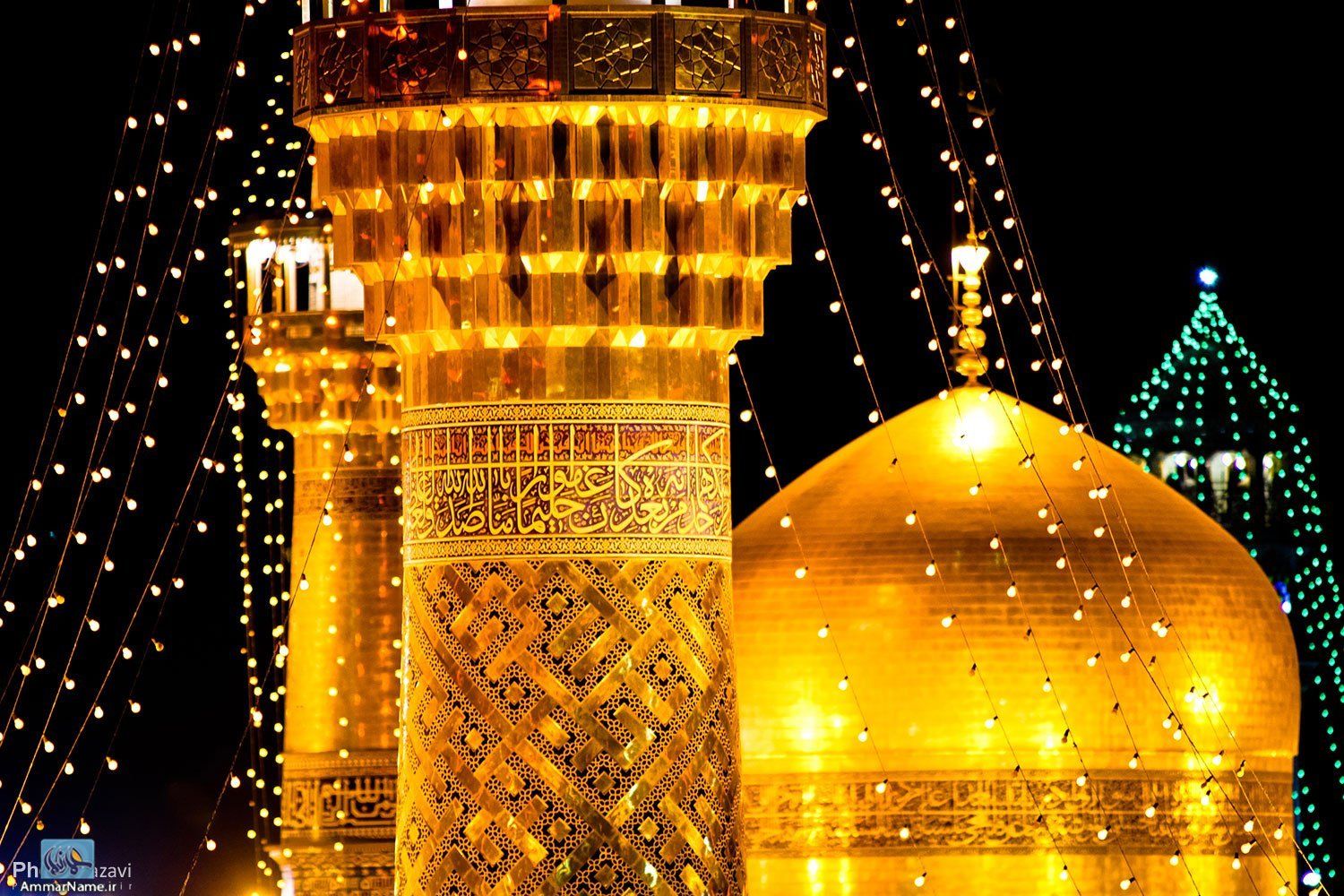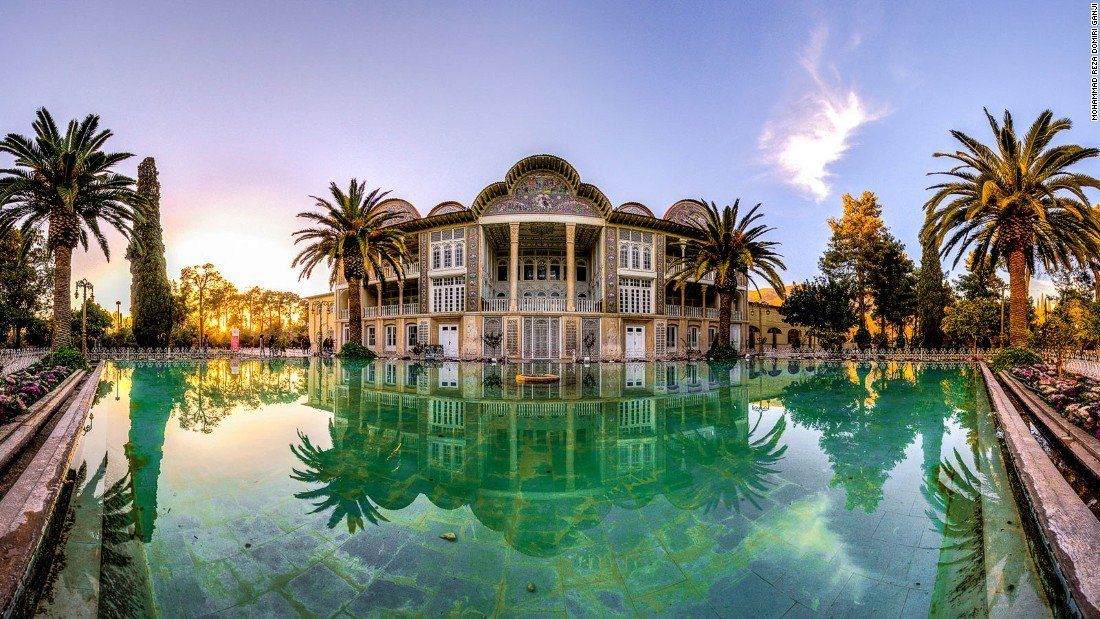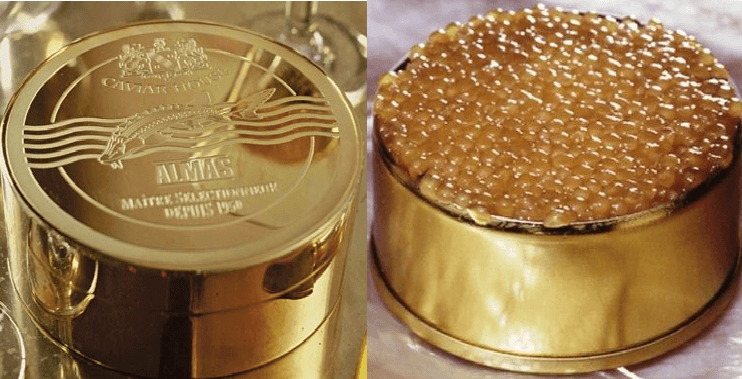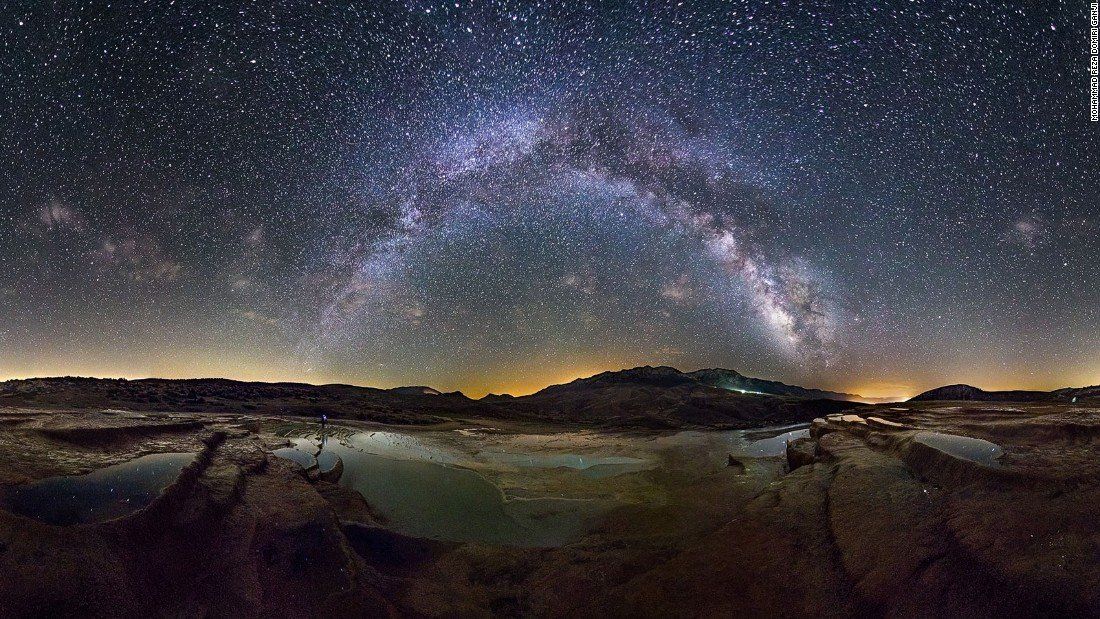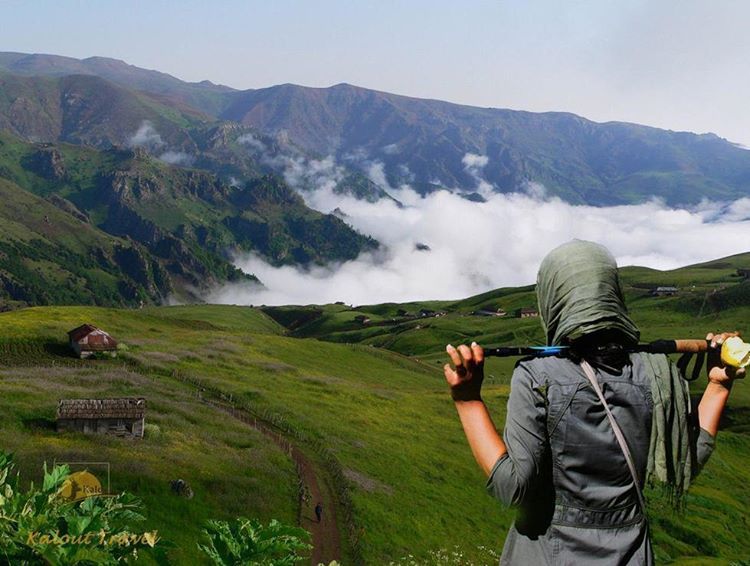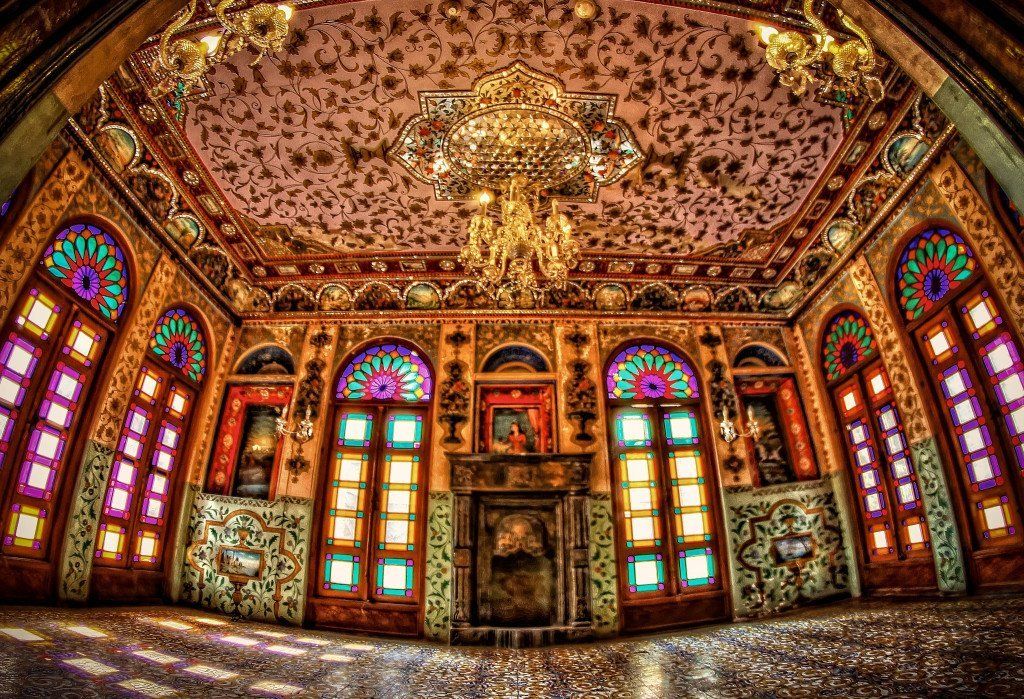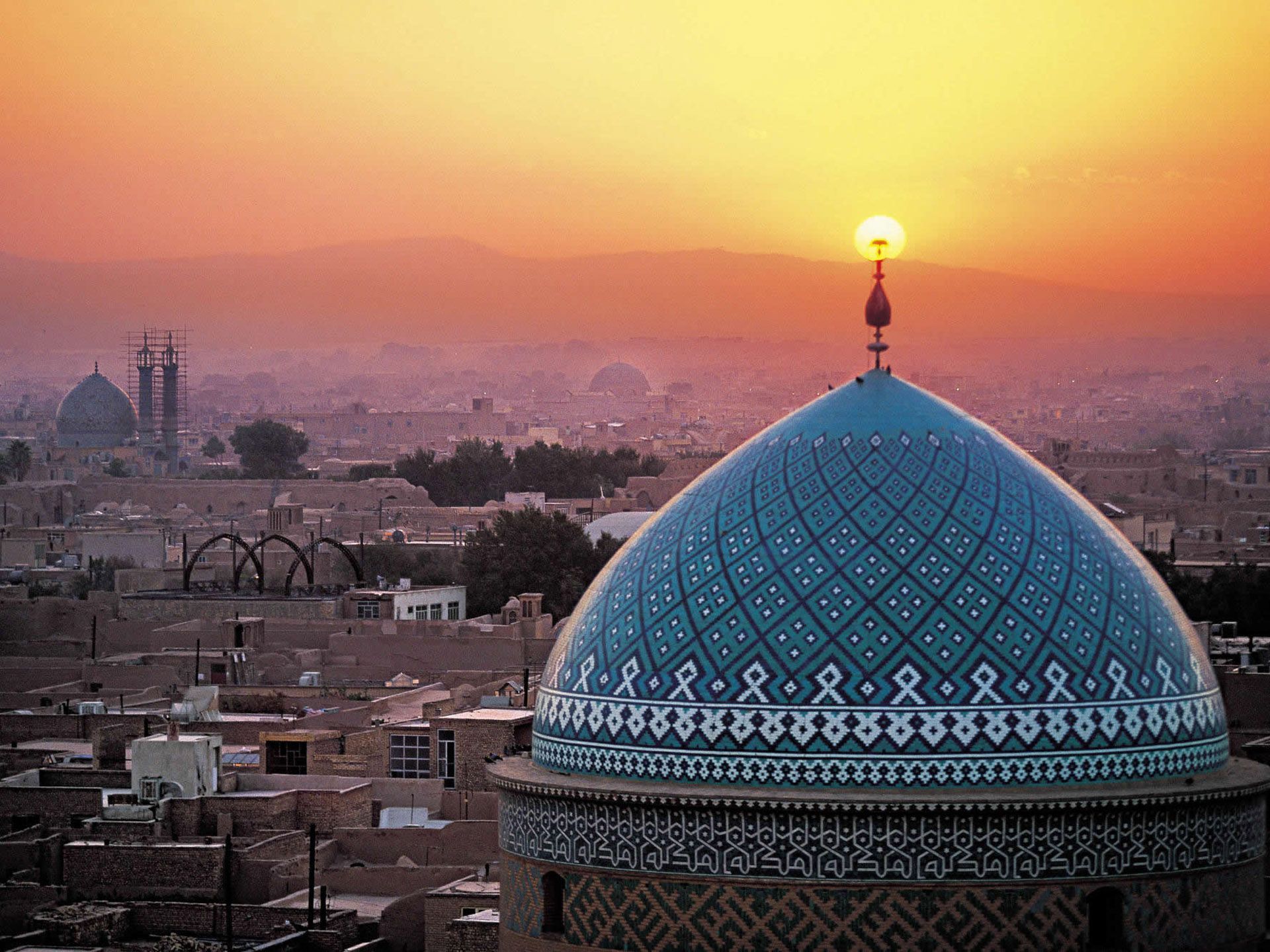Shab-e Chelleh or Shab-e Yalda
Shab-e Yalda ("Yalda night" Persian: شب یلدا) or Shab-e Chelleh ("night of forty", Persian: شب چله) is an Iranian festival celebrated on the "longest and darkest night of the year," that is, in the night of the Northern Hemisphere's winter solstice. Calendrically, this corresponds to the night of December 20/21 (±1) in the Gregorian calendar, and to the night between the last day of the ninth month (Azar) and the first day of the tenth month (Dey) of the Iranian civil calendar.
The longest and darkest night of the year is a time when friends and family gather together to eat, drink and read poetry (especially Hafez) until well after midnight. Fruits and nuts are eaten and pomegranates and watermelons are particularly significant. The red color in these fruits symbolizes the crimson hues of dawn and glow of life. The poems of Divan-e-Hafez, which can be found in the bookcases of most Iranians families, are intermingled with peoples' life and are read or recited during various occasions like this festival and at Nowruz.
The longest and darkest night of the year marks "the night opening the initial forty-day period of the three-month winter", from which the name Chella, "forty", derives. There are all together three 40-day periods, one in summer, and two in winter. The two winter periods are known as the "great chella" period (1 Dae to 11 Bahman, 40 full days), followed/overlapped by the "small chella" period (10 Bahman to 30 Bahman, 20 days + 20 nights = 40 nights and days). Shab-e Chella is the night opening the "big chella" period, that is the night between the last day of autumn and the first day of winter. Iranian celebrated this night because they believed that the last day of darkness will end tonight and after tomorrow the sun will shine more and more some how the called it "the night that sun will reborn" and from time to time other cultures and civilizations came to contact with Persian and as cultures have effect on each other, they took the idea and named it similarly on their language. it is not clear when and how this festival went to the Roman Empire but the time of celebrating ( more that 5000 years ago ) of this festival shows that Persian celebrated it long before Egyptians and Romans. In most ancient cultures, including Persia, the start of the solar year has been marked with the celebration of the victory of light over darkness, and the renewal of the sun. For example, 4,000 years ago, Egyptians celebrated the rebirth of the sun at this time of the year. Their festival lasted for 12 days to reflect the 12 divisions in their solar calendar. The ancient Roman festivals of Saturnalia (god of agriculture, Saturn) and Sol Invicta (sun god) are amongst the best known celebrations in the western world. The other name of the festival, 'Yaldā', is ultimately a borrowing from Aramaic language. Yalda means "birth" but in a religious context was also the Syriac Christian proper name for Christmas, and which was celebrated on eve of the winter solstice. the territory of Persian was so large and people spoke different languages that one of them was Aramaic language. After some time that is not so clear the work of " Yalda " also came to use for this festival and today in Iran, people call it both 'Shab-e Yalda' and 'Shab-e Cheleh' and they became synonymous and the two are used interchangeably.
An association with the 40-day "chella" period is preserved amongst Iranian Azerbaijanis and Azerbaijan Republic, who call it Çillə Gecəsi چیلله گئجهسی which means the beginning of the first 40 days of winter.
Shab-e Chella was officially added to Iran's List of National Treasures in a special ceremony in 2008.
Customs and traditions
In Zoroastrian tradition the longest and darkest night of the year was a particularly inauspicious day, and the practices of what is now known as "Shab-e Chelleh/Yalda" were originally customs intended to protect people from evil during that long night, at which time the evil forces of Ahriman (dark forces) were imagined to be at their peak. People were advised to stay awake most of the night, lest misfortune should befall them, and people would then gather in the safety of groups of friends and relatives, share the last remaining fruits from the summer, and find ways to pass the long night together in good company. The next day (i.e. the first day of Dae month) was then a day of celebration, and (at least in the 10th century, as recorded by Al-Biruni), the festival of the first day of Dae month was known as Ḵorram-ruz (joyful day) or Navad-ruz (ninety days left to Nowruz). Although the religious significance of the long dark night have been lost, the old traditions of staying up late in the company of friends and family have been retained in Iranian culture to the present day.
References to other older festivals held around the winter solstice are known from both Middle Persian texts as well as texts of the early Islamic period. In the 10th century, Al-Biruni mentions the mid-year festival (Maidyarem Gahanbar) that ran from 11-15 Dae. This festival is generally assumed to have been originally on the winter solstice, and which gradually shifted through the introduction of incalcation.cf. Al-Biruni also records an Adar Jashan festival of fire celebrated on the intersection of Adar day (9th) of Adar month (9th), which is the last autumn month. This was probably the same as the fire festival called Shahrevaragan (Shahrivar day of Shahrivar month), which marked the beginning of winter in Tokarestan.
Food plays a central role in the present-day form of the celebrations. In most parts of Iran the extended family come together and enjoy a fine dinner. A wide variety of fruits and sweetmeats specifically prepared or kept for this night are served. Foods common to the celebration include watermelon, pomegranate, nuts, and dried fruit. These items and more are commonly placed on a korsi, which people sit around. In some areas it is custom that forty varieties of edibles should be served during the ceremony of the night of Chelleh.
Light-hearted superstitions run high on the night of Chelleh. These superstitions, however, are primarily associated with consumption. For instance, it is believed that consuming watermelons on the night of Chelleh will ensure the health and well-being of the individual during the months of summer by protecting him from falling victim to excessive heat or disease produced by hot humors. In Khorasan, there is a belief that whoever eats carrots, pears, pomegranates, and green olives will be protected against the harmful bite of insects, especially scorpions. Eating garlic on this night protects one against pains in the joints.
After dinner the older individuals entertain the others by telling them tales and anecdotes . Another favorite and prevalent pastime of the night of Chelleh is divination by the Dīvān of Hafez (fāl-e Hafez). It is believed that one should not divine by the Dīvān of Hafez more than three times, however, or the poet may get angry.
Activities common to the festival include staying up past midnight, conversation, drinking, reading poems out loud, telling stories and jokes, and for some dancing. Prior to invention and prevalence of electricity, decorating and lighting the house and yard with candles was also part of the tradition, but few have continued this tradition. Another tradition is giving dried fruits and nuts to family and friends, wrapped in tulle and tied with ribbon (similar to wedding and shower "party favors"). Prior to ban of alcohol, drinking wine was also part of the celebration.
Another custom performed in certain parts of Iran on the night of Chelleh involves young engaged couples. The men send an edible arrangement containing seven kinds of fruits and a variety of gifts to their fiancees on this night. In some areas, the girl and her family return the favor by sending gifts back for the young man.
Further Reading:






















